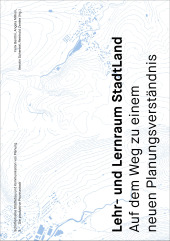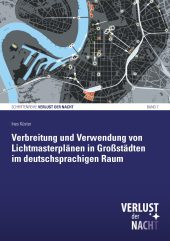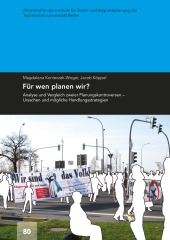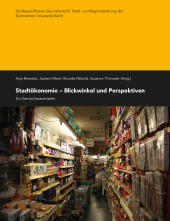Erneuerung der Erneuerung?
Eine neue Rolle der Stadterneuerung im Kontext von Benachteiligungsphänomenen in der Stadtentwicklung
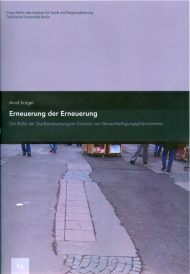
Size: 173 pages
Format: 21,0 x 29,7 cm
Publishing year: 2008
Format: 21,0 x 29,7 cm
Publishing year: 2008
Reihe: ISR Impulse Online (bis Bd. 50: ISR Graue Reihe) ; 10
ISBN 978-3-7983-2078-9Today’s cities are challenged by a new spatial order that stimulates social exclusion amongst the members of their populations. Renewal has always sought to meet this challenge: from the development of the sensitive renewal in the 1980s to the variety of today’s „Soziale Stadt“ and „Stadtumbau“ which are the new programmatic columns of renewal. Whilst the sensitive renewal („Behutsame Stadterneuerung“) is linked to a physical refurbishment, „Soziale Stadt“, ‘Social City’ in literal translation, tries to concentrate on the socio-economic aspects of renewal, and, eventually, „Stadtumbau“, literally ‘Urban Redevelopment’, was created due to the massive appearance of empty premises. Today, these renewal programs incorporate high competence in solving distinct problems in the urban quarter, but, regardless of how, lack competence in avoiding them. Saying so, we might consider that traditional renewal defines its goals in enabling urban quarters to challenge future problems on their own by virtue of sustainably achieved structures. After the completion of a renewal program an urban quarter, thus, should be provided with a healthier environment, cohesive living conditions, and empowered inhabitants organised in supportive networks. This approach – per se – is good, but in view of various urban quarters that experience a kind of programmatic career in renewal patterns for the last 25 years and more, this desirable approach often seems to have failed its effects. Consequently, this thesis connects the historic development of programmatic renewal patterns with the sociological framework of today’s cities. Part A is devoted to the phenomenon of exclusion and tries to define what makes inter¬vention by renewal necessary and when. As a result, intervention fields will be elaborated – fields of action in which renewal should tackle local disadvantage. These intervention fields will then be the basis for a systematization in Part B in which the history of German renewal since the 1980s, the “victory” of sensitive renewal, will be told three times in order to highlight three different fields of tension: first, the one between physical and social renewal, secondly the one between (non-)participation and (dis-)empowerment of the quarter’s inhabitants and, lastly, the one between the comprehensive and incrementalistic planning approaches. Afterwards, the five intervention fields will be conceptually analysed to gain an output-oriented pro¬grammatic conclusion for renewal that acts against exclusionary mechanisms instead of the more input-oriented programmatical columns. The result will be a “pentagon of intervention“ against exclusion. It consists of:
● Material equipment (infrastructure included)
● Factual accessibility (of infrastructure)
● Communication and networks
● Escape Opportunity
● Symbolism and image
With the help of two recent German debates on renewal, integrated development and continuation, the third part addresses a summation for a new role of renewal, which will eventually be drafted into a modular model of renewal. On the basis of such a modular strategy of renewal units planners can specify more precisely which parts of a renewal process have to last continuously, which temporarily, and in how far a renewal process can concentrate on the empowerment of the inhabitants to enable them to break out from social deprivation individually. This draft of a model also takes an interest in the discourse about „third ways“ between incrementalism and comprehensive planning. The draft itself is not ought to serve as a complete answer to today’s challenge but as a possible pathway in society’s debate.
